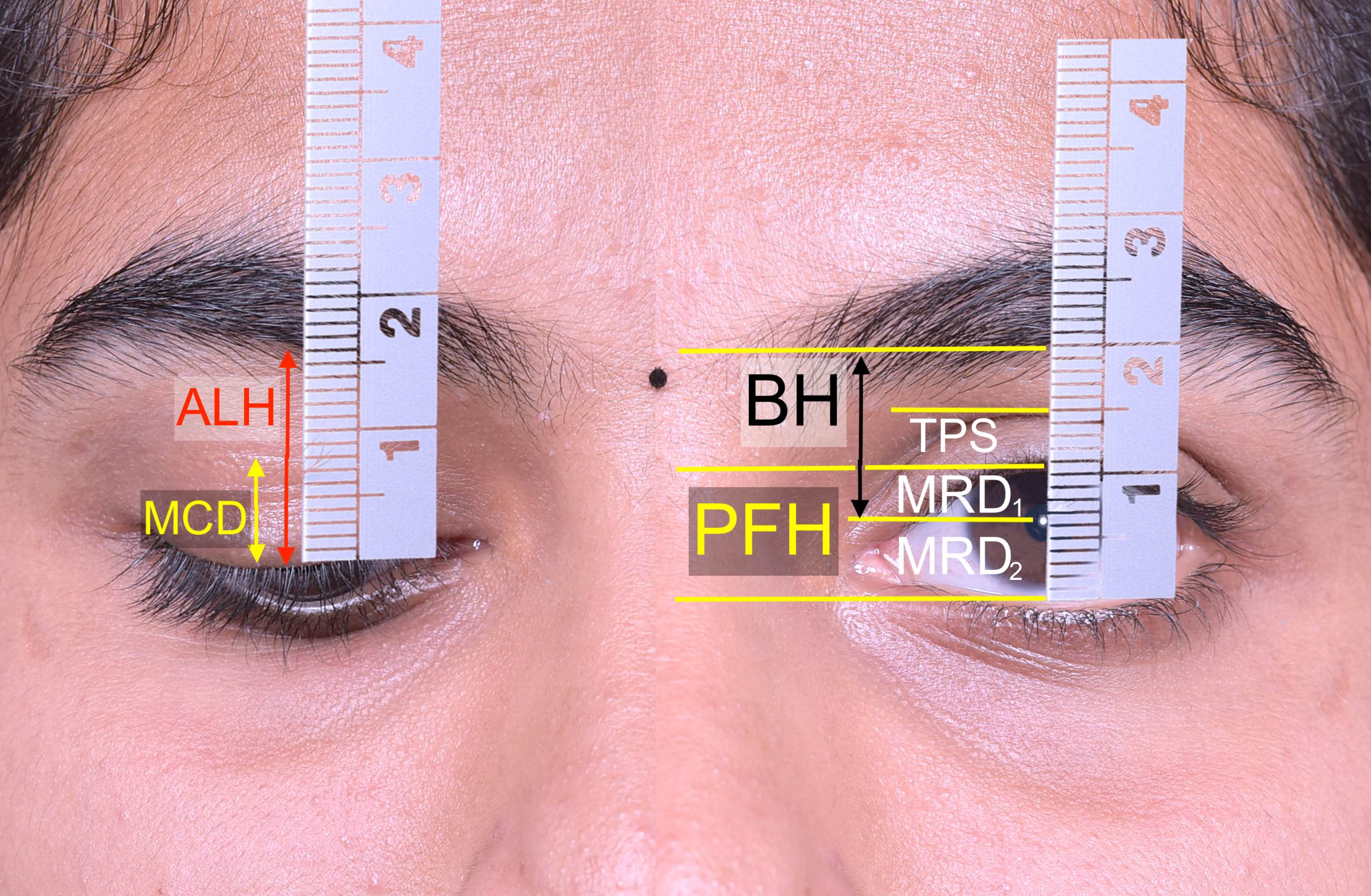Introduction
Droopy eyelid (ptosis) can occur as a result of birth defect, injury, muscle disorder, nerve disorder, or simply due to aging. It gives a sleepy appearance, and can even obstruct vision if severe. Ptosis may also cause excessive forehead wrinkling, abnormal head posture such as chin elevation, and eye fatigue. In children below 8 years of age, droopy eyelid can affect vision leading to a lazy eye (amblyopia). In adults, droopy eyelid is mainly a cosmetic concern. Surgery can correct this problem by repairing the muscle that lifts the eyelid.
Consultation  Evaluation of ptosis involves several critical measurements, and hence an actual check-up is far more informative than just photographs or video consult. The measurements decide the type of surgery to be performed, and also determines the scope and extent of side-effects if any. Everything that you read on internet as 'side effects of ptosis surgery' may not be applicable to you.
Evaluation of ptosis involves several critical measurements, and hence an actual check-up is far more informative than just photographs or video consult. The measurements decide the type of surgery to be performed, and also determines the scope and extent of side-effects if any. Everything that you read on internet as 'side effects of ptosis surgery' may not be applicable to you.
Surgical Technique Several surgical options are available. The choice of surgery depends upon the cause, and severity of the droop.
1) Scarless technique (MMCR): When the eyelid droop is mild, a simple lift of the tissues is performed from the back of the eyelid (Muller muscle conjunctival resection). There is no skin scar in this surgery, but this technique is only applicable to some patients, not to all.
2) Levator reattachment: Droopy eyelid acquired later in life is usually due to the eyelid muscle that has 'slipped' from its normal position, much like the string of a curtain, that is not in its right place. Here, we simply place it back in its normal position.The scar is faint, and hidden in the eyelid fold.
3) Levator resection: Moderate droop that is present since birth requires tightening of the abnormal muscle that lifts the eyelid (levator), and is preferably done from the skin side. The scar remains hidden in the upper eyelid skin fold.
4) Frontalis Sling surgery: For severe ptosis, tightening the eyelid muscle does not help. The eyelid has to be connected to the eyebrow muscle (frontalis) to lift it. This is very much similar to lifting a curtain by pulling up the string. The material used to connect the eyelid to the eyebrow muscle can either be synthetic (Sutures, or Silicone thread) or your own body tissues (Fascia lata from your thigh). This surgery involves 3-5 micro-incisions (2-3mm) over the eyelid and eyebrow. Sling surgeries are not permanent, and the eyelid often droops in a few years due to constant blinking and gravity. A sling surgery therefore, is comparable to the batteries in a torch, that require replacement every 2-4 years. A patient who needs a sling surgery may therefore need multiple revisions of the surgery over his/her lifetime. The good news however, is that the same scars can be used for multiple revisions.
Recovery Time Surgery for mild to moderate droop can be performed as a day-care procedure under local anesthesia and takes about 30 to 45 minutes. Discomfort is minimal, and stitches are removed in 5-7 days. Most patients are back to light work within a week. Minimal bruising may persist for 1-2 weeks. For severe ptosis (sling surgery) and for children, general anaesthesia is preferred and hence, one day admission is advisable.
How perfect is the surgery? Ptosis is not an exact science. Although we do our best, results vary from person to person based on different healing patterns.
1) Re-adjustment: In 90+ % cases, the results of ptosis surgery give satisfying results. However, a realistic expectation is important. The dynamic natural features of a normal eyelid cannot be totally replaced. In 5-10% cases, ptosis surgery may need one or two sessions of stitch adjustment (1-6 weeks after surgery) to make it better. This is not failure of the surgery, but an add-on step, to make it better.
2) Perfection in all directions of gaze? In case of moderate/severe ptosis since birth, correction is optimal only in straight gaze (passport photo), and side gazes. The eye appears slightly droopy in upgaze, and slightly wider in downgaze.
3) Will my eye close during sleep? In case of moderate/severe ptosis since birth, eye closure is incomplete during sleep. This finding is noted in up to 30% of normal population, and the eye can easily adapt to it. This finding therefore, is not a drawback, but rather, a sign of success of the surgery.
Will insurance cover it? Health insurance will cover the costs of ptosis surgery, if it developed after birth. Ptosis as a result of congenital deformity (present since birth) is not covered by most insurance policies. It is important to check these clauses in your insurance plan before proceeding with insurance claim.
Before-After photo gallery:
Patient testimonials: